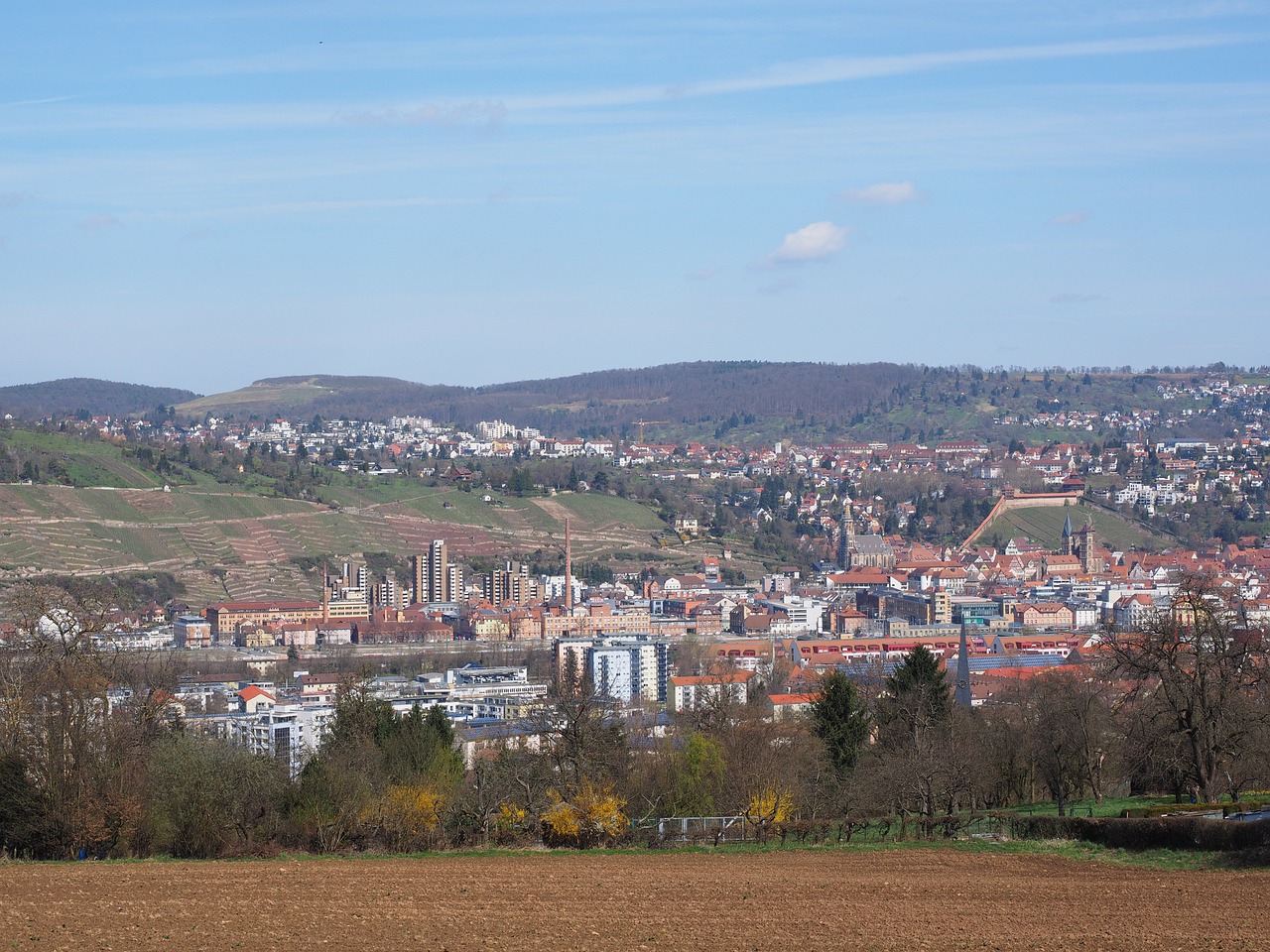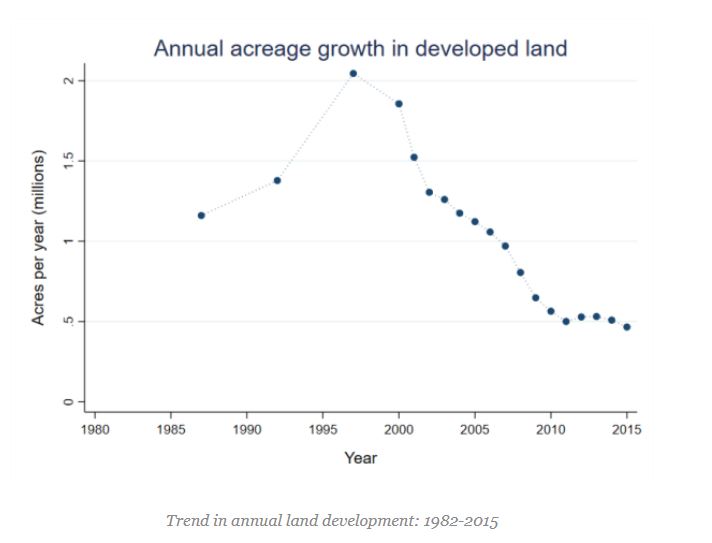Recent Trends in Forest and Agricultural Land Conversion
February 7, 2022
By Dan Bigelow
The conversion of agricultural and forested lands to developed uses is, to a large
extent, a natural byproduct of economic development. As our population grows, we’ll
need more land for housing, schools, commercial and industrial production, and so
on. Of course, however, there are tradeoffs and challenges that accompany an expansion
of development-oriented land uses. Among these are obvious environmental problems
concerning the potential loss of natural lands and wildlife habitat; challenges for
the food system, such as a loss of productive farmland; and other urban-related problems
such as increases in congestion and air pollution from more people commuting longer
distances to their places of work.
Despite the importance of land use from society’s point of view, we know relatively
little about how U.S. land development patterns have unfolded in recent history. In
an effort to fill this gap, one of my recent research papers, with coauthors Dave Lewis from Oregon State University and Chris Mihiar from the U.S. Forest Service, provides a detailed analysis of land development trends
over the period 1982-2015."
Our paper centers on a fundamental shift in the nature of U.S. land development (see
figure). In the last two decades of the 20th century, the annual rate of land development rose dramatically, peaking in the late
1990s across most of the country. Since then, however, the number of acres developed
per year has plummeted to a recent (2015) level that amounts to just 25% of its prior
peak rate. The motivation for our research stemmed from a figure describing this trend
in the USDA’s National Resources Inventory report, which provided the primary data used in our analysis.
The paper further decomposes this trend to highlight the remarkable consistency of
the declining rate of annual land development across various groupings of U.S. counties,
including the previous use of the land (cropland, pasture, range, or forest), median
county income, county population density, average county commute time, and geographic
region.
After demonstrating the consistency of the trend, we then pose the question, “How
would the landscape look today had the previous peak development rates continued?”.
Without delving into the technical details, we address this question using a landscape
simulation model that shows how the shift in development avoided the loss of 7.1 million
acres of agricultural (cropland, pasture, and range) and forest land. Just over half
of the avoided development would have occurred on forest land.
Lastly, the third part of the analysis is devoted to disentangling the various potential
drivers of land development. We focus on three key variables that have been cited
in past literature on the main causes of urban sprawl: population growth, income,
and commuting cost. Using a statistical model, we tease out the role played by these
competing factors and find that gas prices, a primary component of commuting costs,
played the largest role in the declining land development trend observed in recent
years. Specifically, we find that gas price changes were responsible for sparing roughly
4 million acres of land from development, while stagnant income levels also played
a role.
Our results have a number of policy implications and suggest areas where more research
would be fruitful. One implication of our results relates to discussions around climate
policy, specifically efforts to put a price tag on carbon emissions. If a price on
carbon raises gasoline prices, our analysis implies that it would indirectly result
in the conversion of forest and agricultural land, as the cost of commuting long distances
would increase. With that said, however, our study should not be interpreted as saying
that the trend of declining land development will necessarily continue. The Covid-19
pandemic has led to an increase in the number of people working from home, which, should that continue, could reduce the importance of commuting costs in where
people decide to live. This is particularly true in places like Montana, which has
seen a surge in housing prices as people from outside the state have become geographically
untethered to their place of work. In related ongoing research, we are considering
how changes in land development patterns affect land markets, specifically concerning
the value of forest and agricultural lands at the rural-urban fringe.



